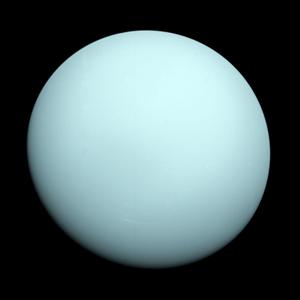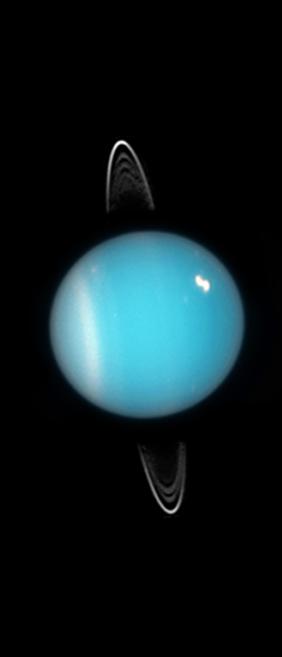Glossary term: 天王星
Description: 天王星是距离太阳第七远的行星。它是一颗冰巨行星,半径约 2.5 万公里,大约是地球半径的四倍。天王星的质量是地球质量的 14.5 倍,内核是坚硬的岩石,周围有一层高压水、甲烷和氨。在早期的外太阳系中,这些化学物质被冻结。年轻的天王星吸积了这些 "冰",因此被称为 "冰巨行星"。天王星的外部大气层是一层厚厚的、浮肿的氢和氦。它的自转轴相对于轨道平面倾斜超过 90 度。天王星有一个行星环。
它与太阳的典型距离约为 29 亿千米,约为 19 个天文单位(地球-太阳距离)。天王星完成一个轨道大约需要 84 年。天王星有超过 25 颗已知的卫星或天然卫星。
在良好的条件下,肉眼几乎看不到天王星,因此在现代之前,天王星并没有被认定为行星。1781 年,威廉-赫歇尔将天王星确定为行星。因此,它是自古以来发现的第一颗行星。天王星以希腊天神的名字命名。
Related Terms:
See this term in other languages
Term and definition status: The original definition of this term in English have been approved by a research astronomer and a teacher The translation of this term and its definition is still awaiting approval
The OAE Multilingual Glossary is a project of the IAU Office of Astronomy for Education (OAE) in collaboration with the IAU Office of Astronomy Outreach (OAO). The terms and definitions were chosen, written and reviewed by a collective effort from the OAE, the OAE Centers and Nodes, the OAE National Astronomy Education Coordinators (NAECs) and other volunteers. You can find a full list of credits here. All glossary terms and their definitions are released under a Creative Commons CC BY-4.0 license and should be credited to "IAU OAE".
If you notice a factual or translation error in this glossary term or definition then please get in touch.
Related Media
天王星自然色彩图像
License: PD Public Domain icons
天王星与星环
Credit: 美国国家航空航天局、欧洲航天局和 M. Showalter(SETI 研究所) credit link
License: PD Public Domain icons










